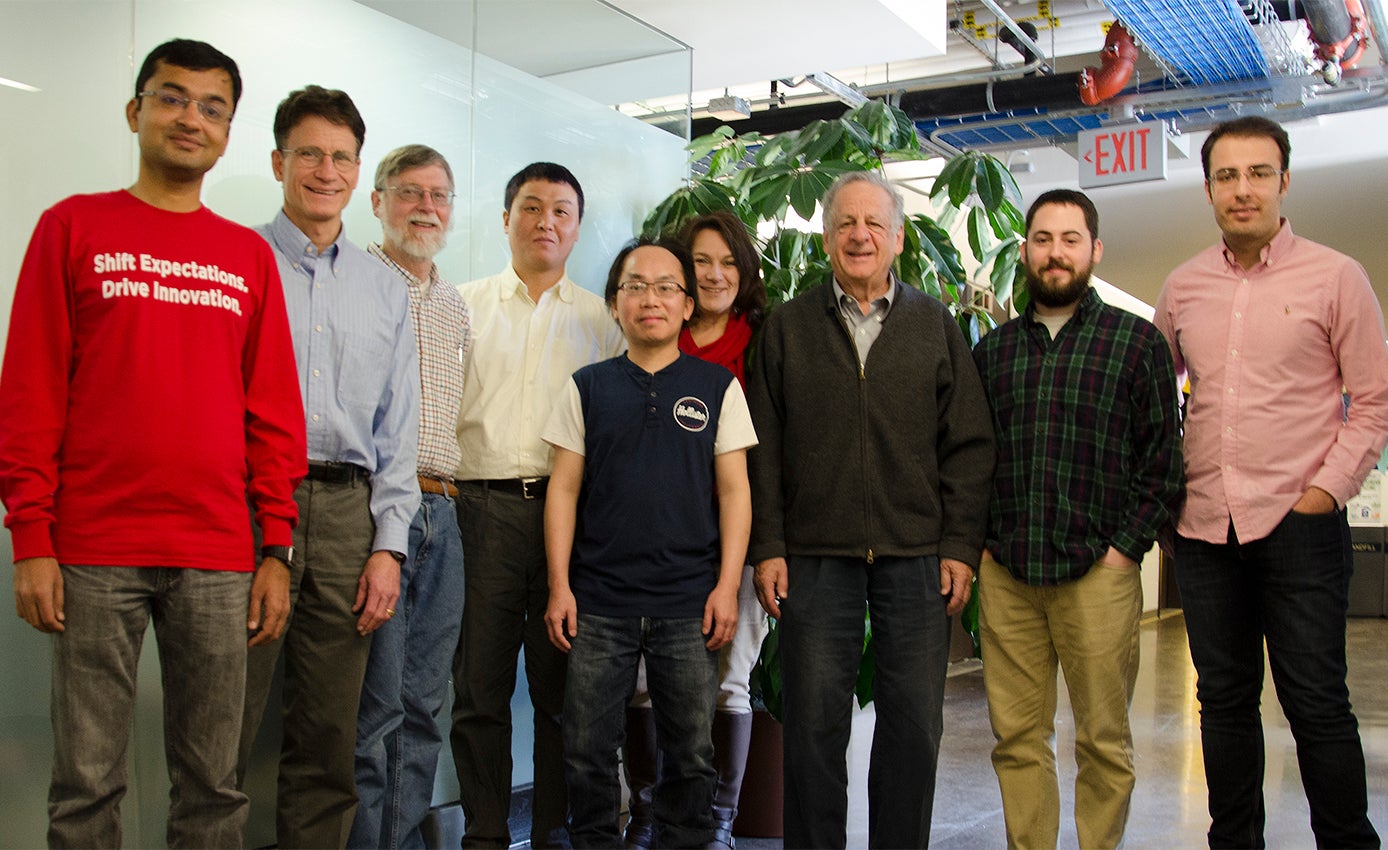
Subscribe to Pittwire Today
Get the most interesting and important stories from the University of Pittsburgh.Three Times Faster: New Computer System Promises to Accelerate Researchers' Work
Pitt researchers are among the first in the nation to have access to Intel’s powerful new computing systems.
The system will dramatically increase the speed of computation available to University researchers through Pitt’s Center for Research Computing, said Ralph Roskies, associate vice provost for research computing.
“A key feature in the new architecture is the high-bandwidth memory," with six memory channels instead of the four used in previous-generation systems, he said.
The University is one of the first two institutions to install a computer cluster with the new Intel Xeon Scalable processors. The system at Pitt will enable users to work three times as fast as on the old system.
To understand the computing power improvements, consider a highway, said Center for Research Computing (CRC) co-director Kenneth Jordan.
“Suppose we have a two-lane highway. Even if there’s a 60-mph speed limit, with lots of cars, it slows to a crawl,” he said. Additional “lanes” of access to memory will speed the traffic flow; adding CPU cores — like swapping cars for buses — will move passengers even more efficiently.
The total of 2,400 cores can execute 41.6 billion instructions per second. And each of the 100 compute node has access to 24 of these "brains," compared to only four or eight in the systems being retired. Each "brain" performs these billions of tasks and potentially shares access to the same 192 GB of memory.
With the boost in computational power provided by the new computer systems, Pitt researchers — including those from the University’s biomedical community — will experience faster turnaround on calculations and will be able to tackle more challenging computational problems.
Tech specs
The new cluster, supplied by information technology company Supermicro, has 100 compute nodes, each with two 12-core 2.6 GHz Intel Xeon Scalable processors, plus 192 GB high-speed memory and solid-state drives.
Faculty member John Keith of the Swanson School of Engineering Department of Chemical and Petroleum Engineering said, “With new investments in computational facilities, we can study larger and more complex problems that are more likely to make a real impact on society.”
Keith’s own research group, which is working to effectively convert greenhouse gas into carbon-neutral liquid fuels, will be able to model carbon dioxide conversion mechanisms with greater accuracy than ever before and will be able to run large-scale molecular dynamics simulations to learn which solvents will make chemical reactions more energy-efficient.
Students, too, will have access to the latest high-performance computing through CRC workshops and in courses beyond School of Computing and Information (SCI) data science and computing systems classes.
“The availability of a first-class computing infrastructure is indispensable to foster a new culture of collaborative research across multiple disciplines to elucidate how complex natural, human and engineered systems interact with each other and to gain deeper understanding on how they can be managed,” said Paul Cohen, professor and founding dean of the computing and information school, which he noted is focusing on systems-oriented rather than discipline-oriented science.
Taieb Znati, chair and professor in the computing and information school's Department of Computer Science, said, “This addition to the existing research computing infrastructure represents a leap forward in terms of performance gains and scalability. The enhanced infrastructure will provide faculty with unique capabilities to gain deeper insights into a range of complex problems across a diverse range of scientific and engineering fields.”
One key problem the new cluster will address is the so-called “memory wall” — the processing bottleneck that’s resulted from gains in processing performance that have increasingly outpaced gains in memory speed.
Roskies said processors have gotten very fast in doing arithmetic. But the numbers first have to be retrieved from the system's memory, which takes more time than doing the actual arithmetic operation.
"So just speeding up the adder or the multiplier doesn't make as big a difference as being able to fetch or retrieve numbers from memory faster. That's what this new system does,” he said.
About the Center for Research Computing
Pitt’s CRC is a key resource for advancing important University-based research. Notably, Keith and CRC-affiliated faculty members Giannis Mpourmpakis and Christopher Wilmer of chemical and petroleum engineering and Peng Liu of the Department of Chemistry have won prestigious National Science Foundation 2017 CAREER awards.
"The center has been absolutely critical to our group's research; we use it for nearly every project," said Wilmer.
Said Keith: “The support of Pitt’s CRC allows our group to focus its time doing our high-performance computational research projects. The CRC staff also provides highly valuable workshops and their individual expertise to train my students in the skills they need to advance their research — more than I could alone.”


